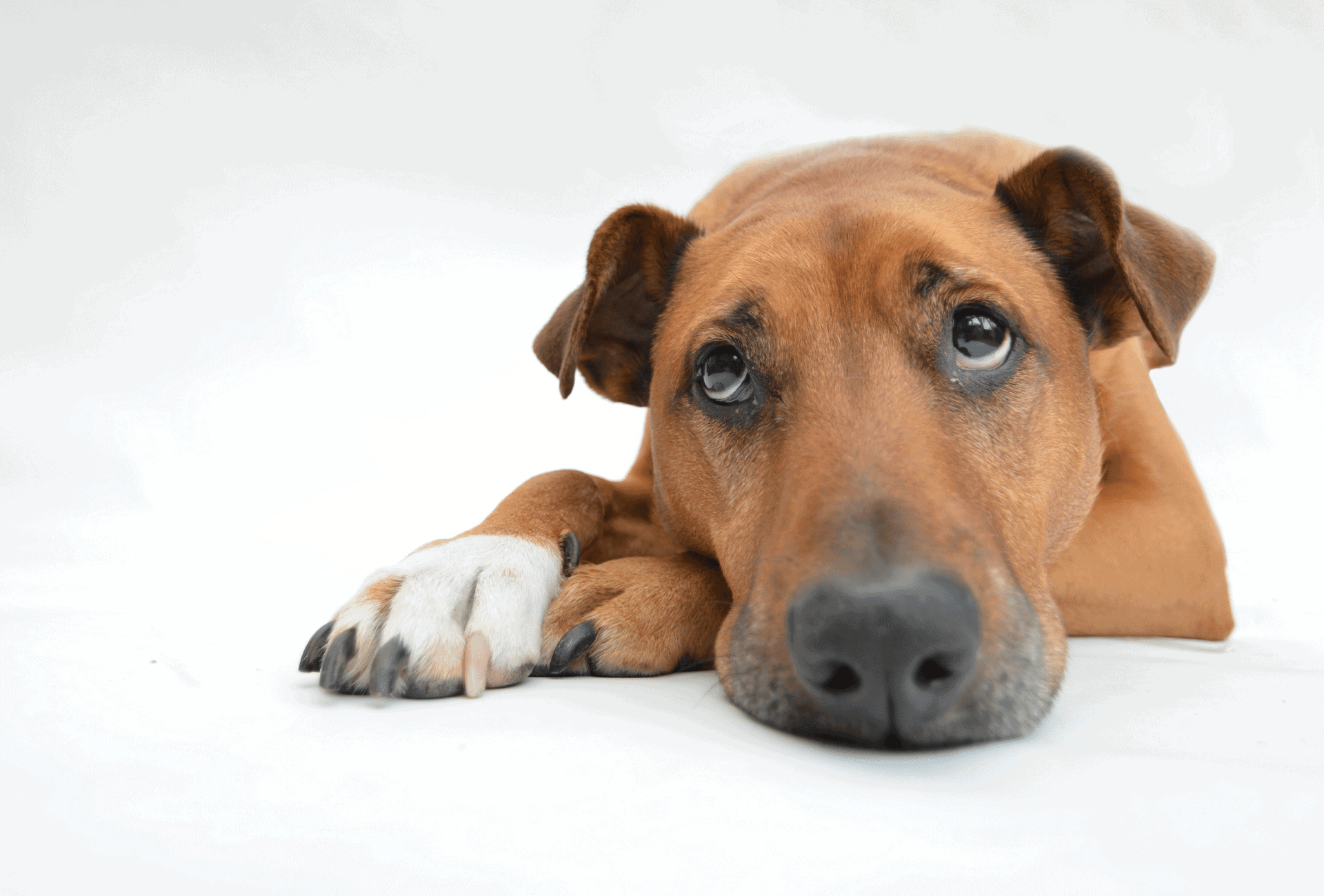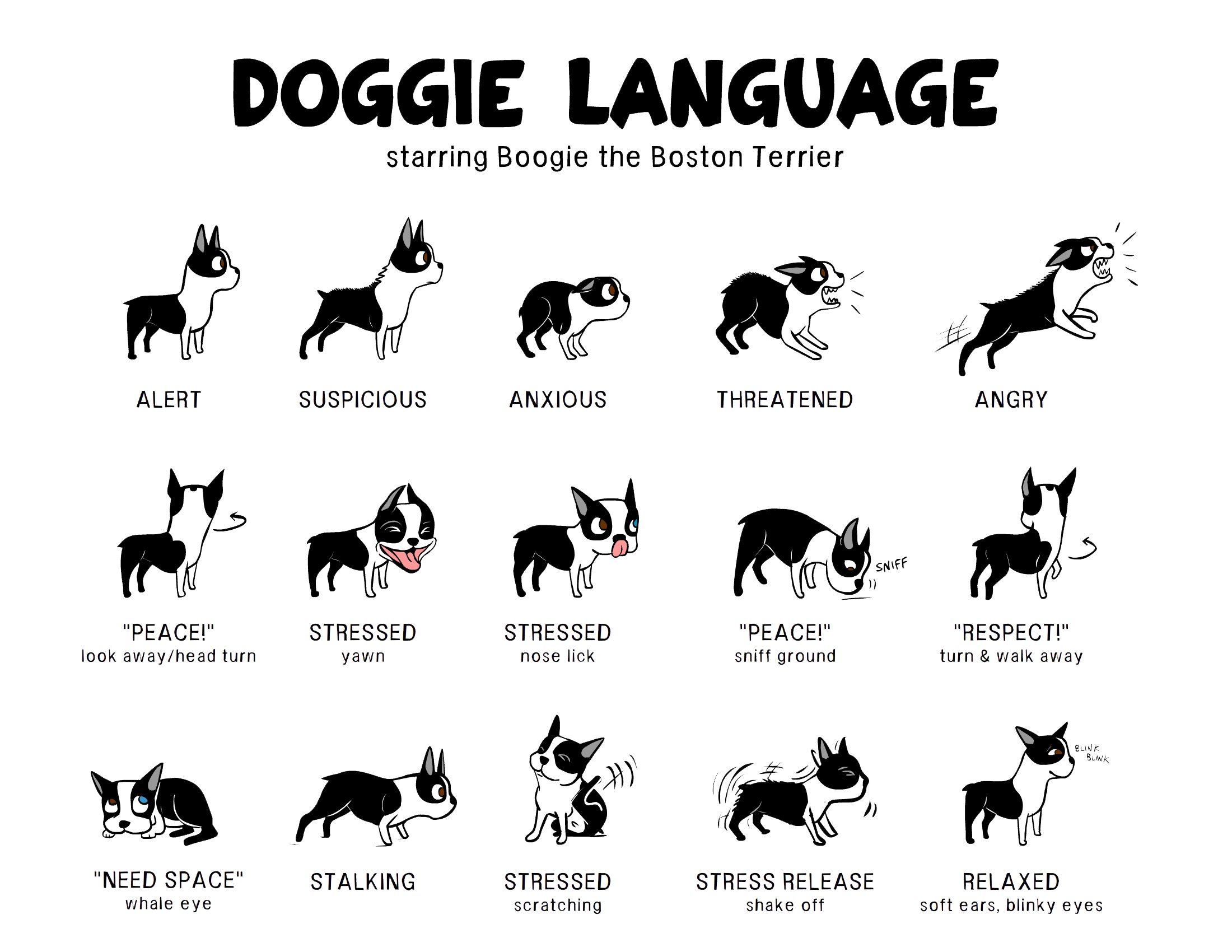Dog-led decompression
What is dog-led decompression?
Decompression is a gradual adjustment to a new environment following a major life event such as surrender to a shelter or rescue. We watch dog body language to assess stress levels during this time. Learn to read dog body language so you are prepared to help your dog decompress.
We recommend that you watch this video: Dog-led decompression: Your dog’s first week in their foster or adoptive home
Body Language:
How long does decompression take?
Every single dog is different. There is no magic timeline. It may take days, weeks, or even months for dogs to settle in. Your dog’s body language will be your best guide. Remember to be patient and enjouy getting to know your new dog. It’s important and vital that you go at your new dogs’ pace. Dogs need time to trust their humans in order to build a lasting relationship. timeline. Going at their will help him start to feel safe and feel like your home is his home too.
Why do dogs need to decompress?
Major life changes such as being surrendered, being transported from another state, sheltering, and moving to new homes are all extremely stressful for dogs. That stress manifests itself in different ways. Some dogs sleep a lot; others bounce off the walls and don't sleep enough. Dogs that are allowed to decompress at their own pace are less likely to have undesirable behavior, less likely to run away, less likely to get sick, and more likely to get adopted as efficiently as possible.
How do I prepare my home for the arrival of a new dog?
Secure hazardous materials, trash cans, and irreplaceable items.
Set your dog’s crate up in an out-of-the-way but not isolated part of your home. The crate should have soft, cozy, washable bedding and should be covered on the top and sides by a few blankets to create a sound-dampened area.
If your dog is stressed by pedestrian traffic outside of your windows, draw the blinds and close windows when you are not home.
Gather important supplies like collar, identification tag, harness, leash, toys, chew items, bedding, bowls, enrichment feeders, high-value treats, food, poop bags, non-toxic cleaning supplies, baby gates, and medications if needed.
Be prepared to stick to a schedule. Predictability reduces stress.
Play soft music or white noise to drown out any scary new sounds that your dog may not be familiar with.
Know where the quiet places are in your neighborhood to give your dog potty breaks and walks (especially important if you don’t have a yard).
Make sure that you have a way to separate your decompressing dog from other animals and human children. Your new dog may not want the company of others at first.
If you have more than one dog, make sure that all toy and chew items are put away at first and only given under supervision until you are sure neither dog will guard resources.
Make sure your yard and doors are secure. Dogs should be leashed at all times when outside and invest in a few baby gates! If you have a baby gate, use it at the entry/exit point of your home. A baby gate will not necessarily prevent an escape, but it will slow a dog down if there is a lapse in management. Your doors should always be closed and secure — baby gates are just backup protection. If you have a baby gate, use it.
Cover your furniture if you are worried about shedding.
How do I keep my new dog safe during decompression?
Dogs in new homes are often flight risks. It is crucial to take extra steps to secure new dogs. If your dog is just entering MOR foster care, your dog MUST have a martingale collar with an MOR identification tag. This could save your dog’s life in the event of an escape. Your dog must be on leash at all times when on walks. Foster dogs must be crated when you are not home, unless told to do otherwise by MOR. Do not take decompressing dogs to dog parks or crowded public places (farmers’ markets, food carts, the beach, restaurant patios, any hiking trails, etc.) for the first week of decompression.
How should I interact with my decompressing dog?
How to greet a dog and what to avoid (infographic)
For the first three days, your dog must be able to rest and sleep as much as they need.
Select an area of your home where your new friend has a choice between being with people and the other members of your household or being on their own. It is all about respecting each other’s space. if your dog chooses to hang out by themselves for a while it is important that they have that choice!
It’s important that the dog solicits attention and petting from you, as opposed to you touching, petting, or picking them up because you want to. Giving them this choice is crucial for building trust and confidence. If your dog approaches you soliciting attention or petting, pet them on their chest or shoulder for 3 seconds and then stop. With their body language, are they asking for more petting? Are they saying no thank you? Remember, body language can be subtle.
Do not invite guests over to meet your new dog for at least one week. The most important thing for your dog will be to continue bonding with you or someone else in your home, not your neighbors or friends.
Keep in mind most dogs do not like close physical contact like hugs. Most humans like hugs; dogs do not. Always respect their space and let the dog decide how close they want to be. Allow time for trust to build. Every dog is an individual and will take their own time to feel comfortable in their new environment. Sitting or getting down on the dog's eye level makes humans more approachable.
Establish rules for good contact and bad contact that all members of your household will follow. A general rule of thumb is to keep any petting below the mouth line. Under the chin, the chest, and the sides are safe areas for most dogs. The best time for petting is when the dog moves closer and relaxes.
Just as important as safe petting practices, do not allow anyone to pass their hand over the dog’s head or back. These types of hand movements can be very scary depending on what your new friend was exposed to in the past. If the dog moves away, they are sending a signal that should be respected as a sign they need more space.
How should I introduce my kids, dogs, and cats to my decompressing dog?
If you have other dogs, it’s best to do introductions one at a time and outside if possible. Dogs can get tense around doorways, gates or in narrow spaces like hallways so it’s best to avoid these for introductions.
Stay safe around the dogs you know: a guide for kids (infographic)
Kids:
Cats:
Potty training:
Even if a shelter, rescue, or foster home told you your dog is completely potty trained, do NOT assume that he will know where to go at YOUR house. Remember that accidents are likely.
Potty training for dogs and puppies (tutorial)
Crate training:
Crates facilitate potty training and keep puppies safe for short periods of time when you cannot supervise them. Here are some resources for crate training:
What activities are appropriate for my decompressing dog?
Let your dog rest and sleep as much as they want to without being disturbed. Try to keep the house quiet.
Provide calming activities, including frozen kongs or topples, lickmats, and snufflemats. Licking is calming.
Provide enrichment feeding — every single meal should be an opportunity for your dog to sniff, scavenge, and forage. Put food in cardboard boxes for them to shred. Scatter food on the floor. Roll it up in a towel.
Enrichment for dogs and puppies (tutorial)
Avoid the urge to train lots of cues the first week. Try these techniques instead for getting your decompressing dog to behave in a desirable way.
SMART X 50 Training Game - This Concept Breaks the Mold! — Wildwood Canine
“Find it” — say “find it” and then toss a treat on the ground or yard. This will teach your dog to use his nose.
How to STOP Leash PULLING in 8 Minutes- REAL RESULTS! - YouTube
My dog is showing significant signs of fear, anxiety, or stress even though I followed all of the advice here. What should I do?
If you encounter major problems or need further assistance, please contact us at mahinasohanarescue@gmail.com so we can get you in contact with our main dog trainer.
Recommended YouTube Channels
Upstate Canine Academy - YouTube
Disclaimer and waiver of liability
By using the information presented here you agree to the following: In no event shall Mahina’s Ohana Rescue, its contractors, employees, partners, volunteers, affiliates, or board be liable for any direct, indirect, punitive, incidental, special, or consequential damages whatsoever arising out of or connected with the use or misuse of any information presented here. You agree and acknowledge that any training and behavior advice be used at your own risk and you should assess the risks individual to your animal(s), any animal(s) in your care, and those that interact with your animals/animals in your care before using any advice or information with or for any animal.





